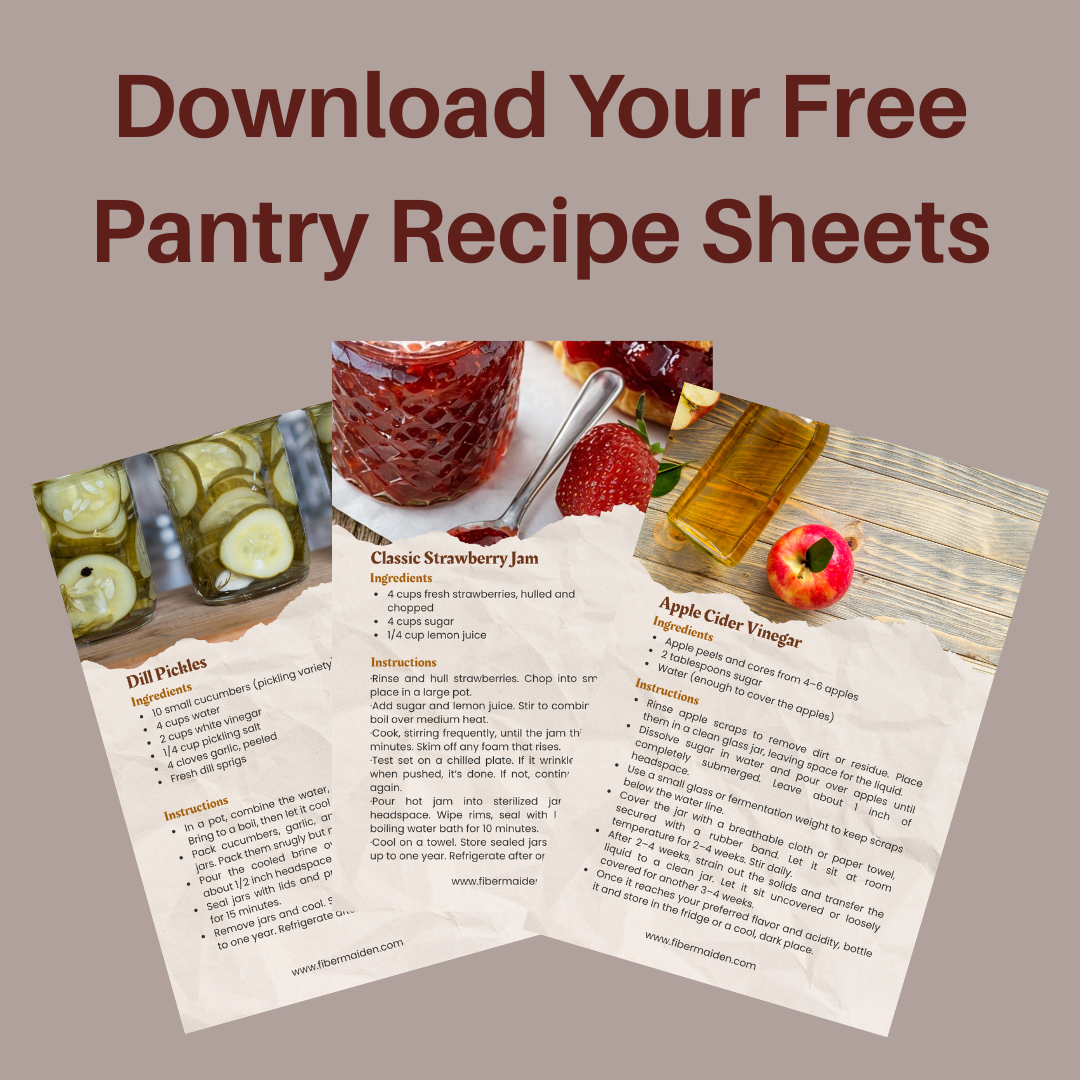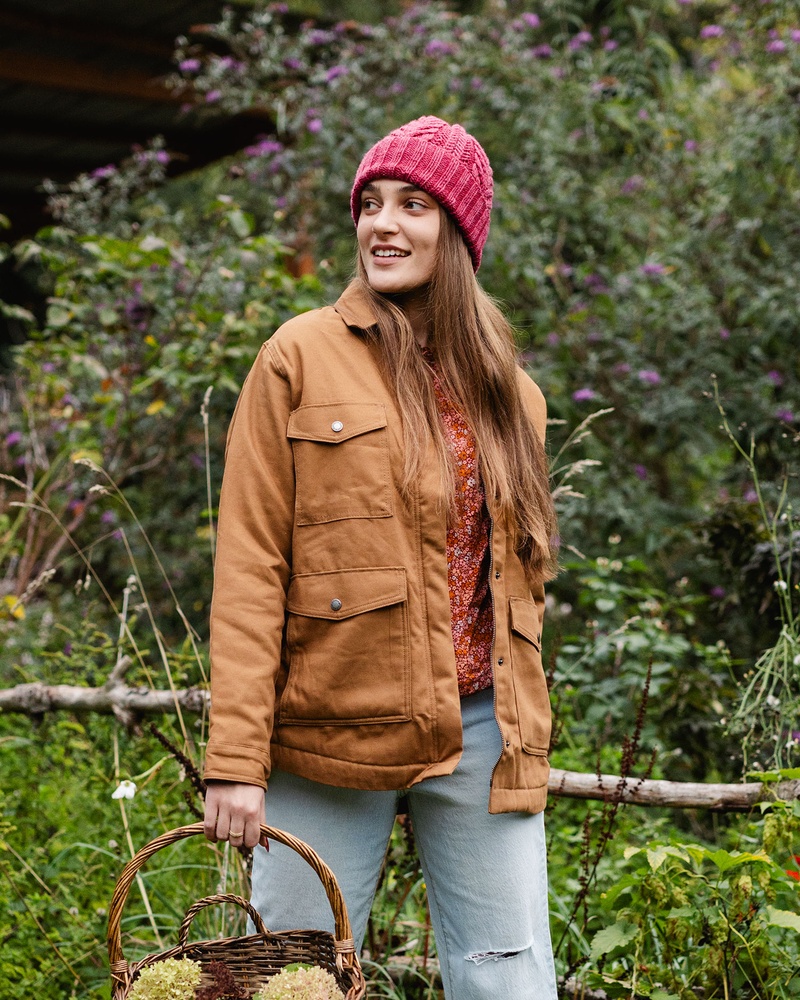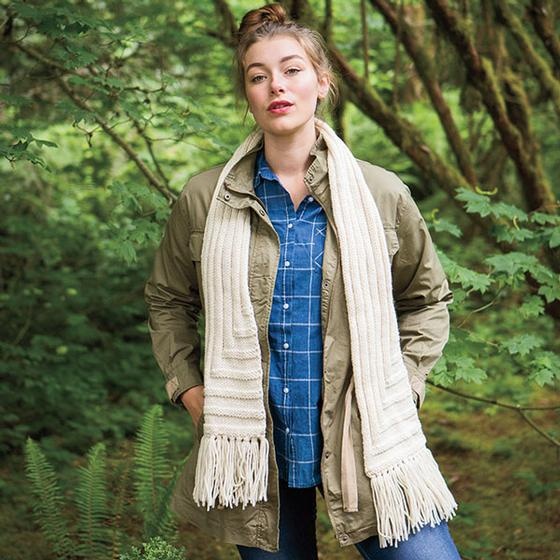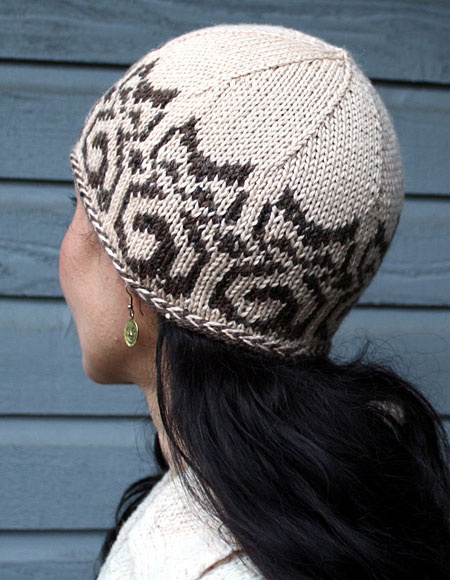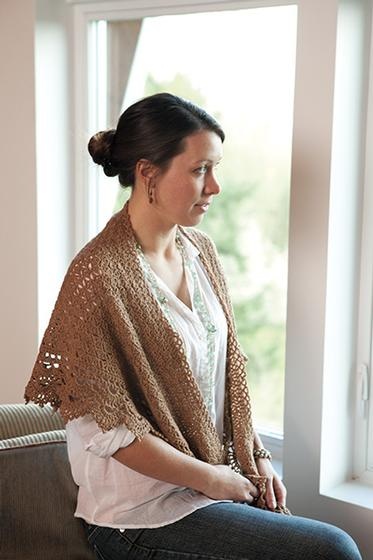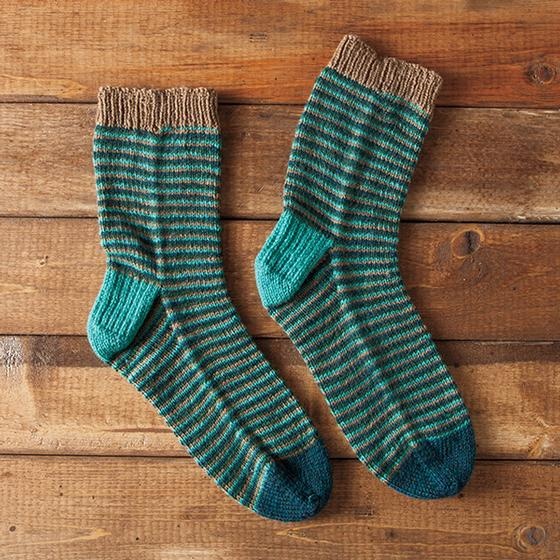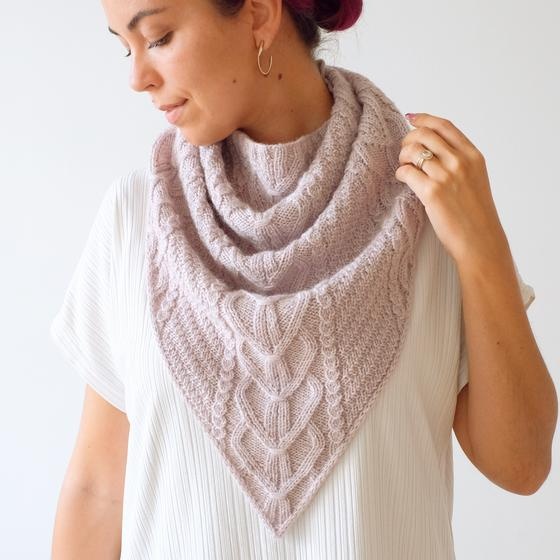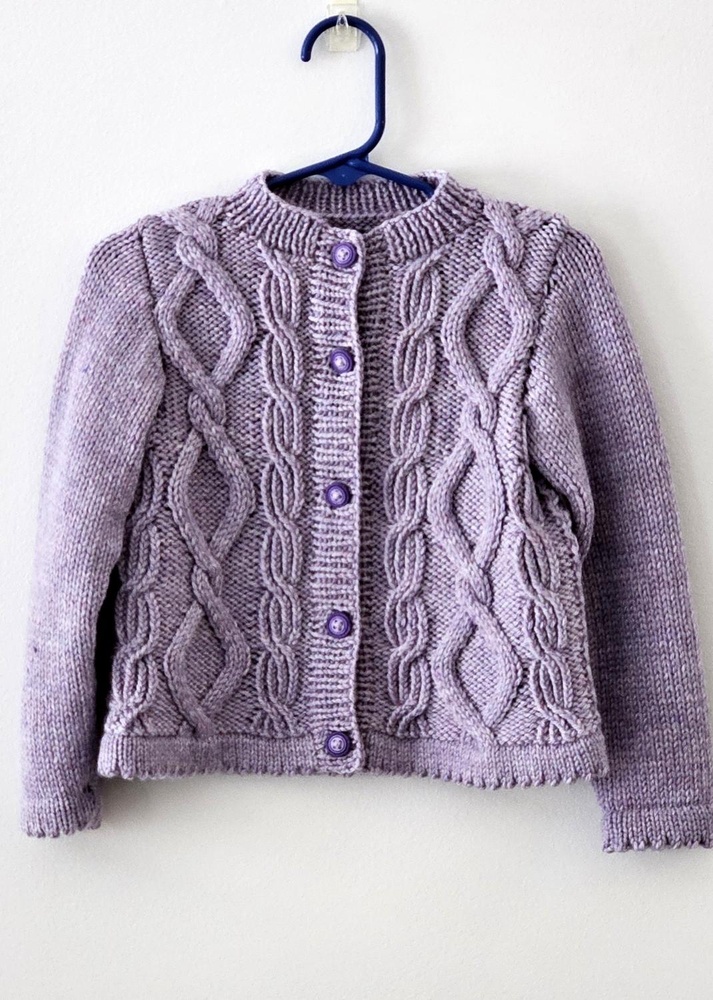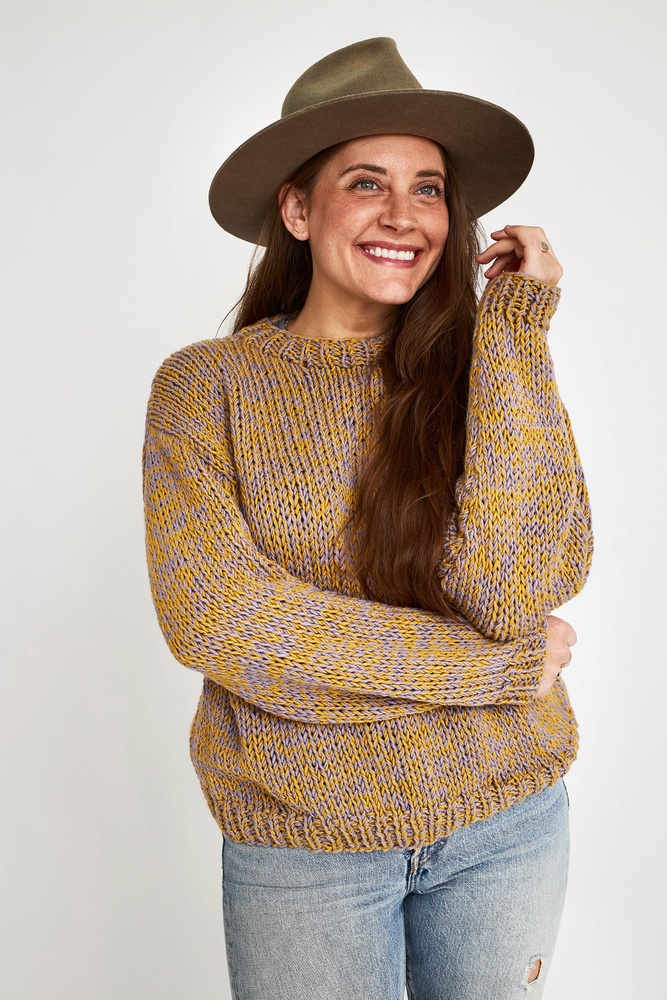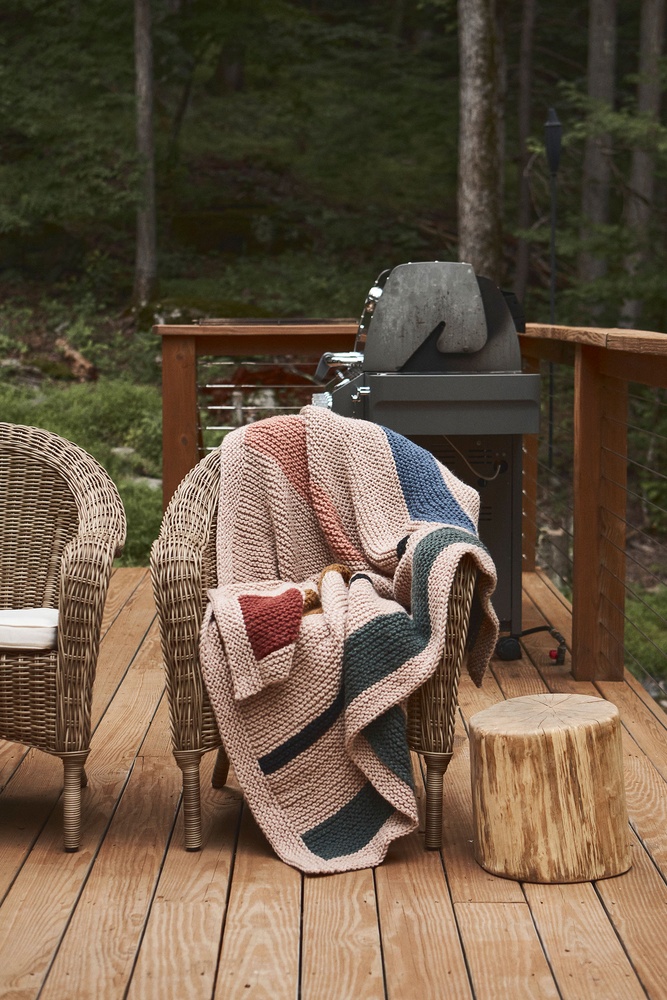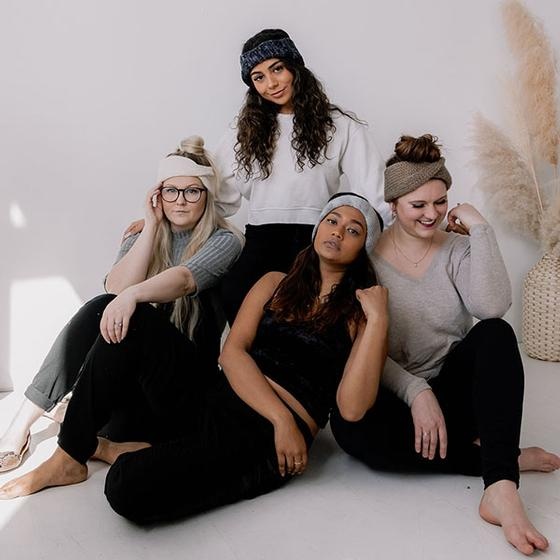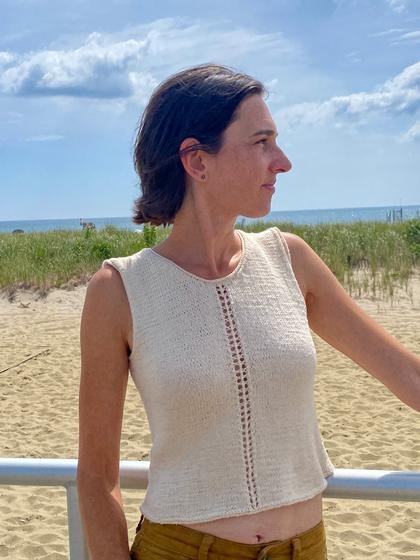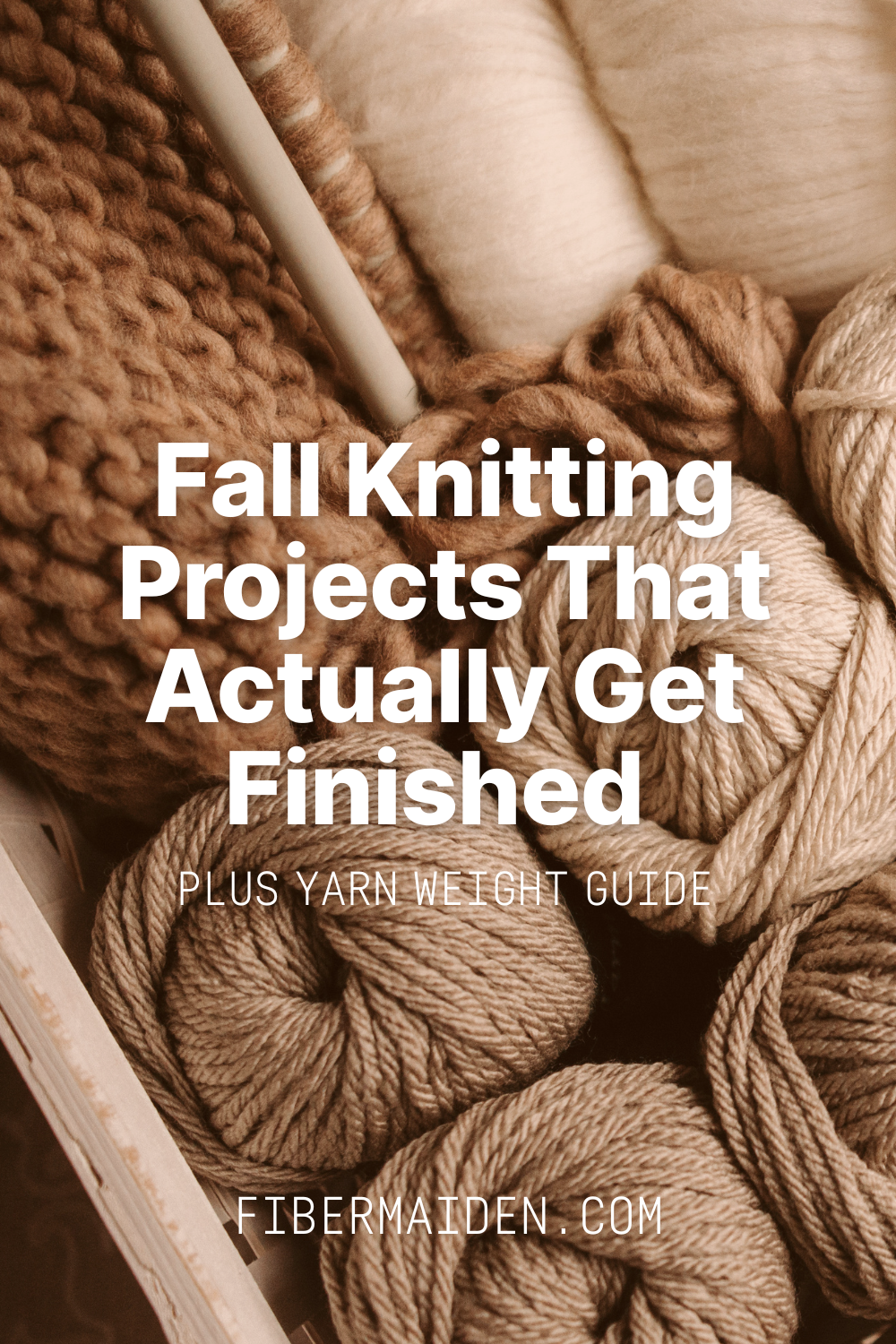Fall Knits Guide
Fall Knits Guide
There's something magical about the first cool morning when you reach for that handknit sweater in the back of your closet. Happy Fall Y'all! The air has that crisp edge that makes you want to wrap up in something cozy, and suddenly every knitting project feels urgent and necessary.
I've been thinking about this a lot lately as I plan my fall knitting queue. There's this shift that happens when summer officially ends. Suddenly I'm not content with lightweight cotton tanks anymore. I want wool against my skin, chunky scarves that actually keep me warm, and sweaters that feel like wearing a hug.
Fall knitting is different from other seasons. Spring knitting feels optimistic and light. Summer knitting is practical and breezy. Winter knitting is about survival. But fall knitting? Fall knitting is about comfort, preparation, and creating pieces that will carry you through the months when everything feels cozy and intentional.
The challenge is knowing where to start. Which yarn weights actually make sense as the temperature drops? What projects will you realistically wear versus the ones that will sit in a drawer looking pretty? How do you balance the urge to knit everything chunky and quick with the reality that some projects deserve the time and attention that finer yarns require? Make sure to check out our free printable Fiber Arts Quick Guide below.
Get The Guide
Ready to stop feeling lost every time you pick up needles or thread? This guide covers the core techniques, tools, and terms for knitting, crocheting, weaving, and simple sewing. No more guessing, just clear steps and beginner checklists so you can actually start (and finish) projects you love.
Disclosure
Some links on FiberMaiden are affiliate links. When you click and purchase, I may earn a small commission at no extra cost to you. I partner only with brands and tools I trust and use in my own kitchen, studio, and garden. Your support means a lot.
Yarn & Fiber Choices for Fall
Choosing the right fiber for fall knitting is about more than just warmth. It's about how the yarn feels in your hands during those long knitting sessions, how it behaves when you're shaping sweaters, and honestly, how it makes you feel when you're wearing the finished piece.
Wool becomes essential once temperatures drop consistently. I've tried to make fall work with cotton and acrylic, but there's something about wool that just understands the season. It breathes when you need it to, insulates when the temperature drops, and has that slight give that makes fit more forgiving. Merino wool is my go-to because it's soft enough for everything from baby sweaters to scarves that sit right against your neck.
Blue Faced Leicester (BFL) has become one of my favorite discoveries for cables and textured patterns. The stitch definition is incredible, and it has a slight sheen that makes even simple stockinette look more sophisticated. Plus, it holds up beautifully to wear and washing, which matters when you're making pieces you actually want to live in.
Alpaca blends solve the weight problem that comes with really warm yarn. Pure alpaca can be almost too warm and tends to stretch out over time, but blended with wool, it gives you that incredible warmth without the bulk. Perfect for scarves and cowls where you want maximum coziness without feeling like you're wearing a sleeping bag.
Don't dismiss non-itch options if wool sensitivity is real for you or your family. Superwash merino eliminates most scratchiness while keeping wool's best qualities. Cotton-wool blends give you structure and breathability with enough wool character to feel seasonal. And honestly, today's acrylic yarns have come so far that some of them feel genuinely luxurious while being completely practical for everyday wear.
Consider your actual lifestyle when choosing fibers. If you're making sweaters for kids who spill everything, superwash wool or high-quality acrylic makes sense. If you're knitting pieces for yourself that you plan to treasure and hand-wash carefully, invest in those gorgeous wool blends that feel like heaven to work with.
Needles, Gauge & Ease
Here's what I've learned about gauge after years of knitting projects that fit perfectly and others that... didn't. The gauge ranges in that chart above are starting points, but your hands, your yarn, and your needles will have their own conversation that might require adjustments.
Swatching isn't optional for fitted pieces, and I've learned to make peace with this. A 4x4 inch swatch in stockinette tells you everything you need to know about how your yarn wants to behave. Cast on 20-24 stitches (depending on your gauge), knit for 4 inches, then measure. But here's the important part: knit your swatch the way you'll knit your project. If you're a tight knitter when you're stressed or a loose knitter when you're relaxed, that matters.
Ease is everything when it comes to sweaters that you'll actually want to wear. I aim for 2-4 inches of positive ease for fitted styles that still move with me, and 4-8 inches for those cozy, oversized pieces that are perfect for layering. Negative ease can work with very stretchy yarns, but be careful with wool that doesn't have much give. There's nothing worse than a sweater that looks perfect but feels like a straightjacket.
Needle material affects everything, especially with wool yarns. Bamboo and wood needles provide good grip without being too sticky, perfect for most wool projects. Metal needles work beautifully for slippery fibers or if you tend to knit tightly. I keep sets of both because different projects call for different tools.
Get 3 Free Recipe Sheets
Ready for recipes that don't require a culinary degree to follow? Get seasonal recipe sheets designed for real kitchens and busy lives, the kind that work even when your kids are asking for snacks mid-prep.
12 Cozy Knit Projects
Quick Accessories That Actually Get Worn
Worsted Weight Beanie This is where I tell everyone to start their fall knitting. A hat works up quickly, uses minimal yarn, and honestly, everyone needs a good handknit hat. Choose a simple ribbed brim with stockinette body, or try a textured pattern if you want something more interesting. The key is picking colors you'll actually wear with your coats. This Twin Rocks Hat by Kalurah Hudson is a great start.
Aran Weight Scarf There's something about rib that just screams fall to me. It's chunky and textured and impossibly cozy, but the pattern is more interesting than plain knitting while still being beginner-friendly. The fabric has incredible stretch and bounce, which means it drapes beautifully and keeps its shape. Perfect for wrapping up when the wind picks up. I really like the Hard Right by Holli Yeoh.
DK Weight Fingerless Mitts I live in these during fall. They keep your hands warm while still letting you function in the world, whether you're texting, driving, or trying to fish keys out of your bag. They're also fantastic for using up leftover yarn from sweater projects, and you can experiment with colorwork or cables without committing to a huge project. I love the details in this Chichester Mitts by Bridget Pupillo.
DK Weight Colorwork Hat If you've been intimidated by stranded colorwork, a hat is the perfect place to start. The small circumference means you're not managing long floats, and if you mess up, it's not a huge time investment to start over. Plus, colorwork hats are just fun to wear, they make you feel accomplished every time you put one on. The color work on this Temple Cats Hat by Suzanne Frary is a lot of fun.
Serious Comfort Projects
Fingering Weight Shawl This is my go-to for early fall layering. A well-designed shawl works as a scarf, a wrap, or a light cover-up, and fingering weight gives you that perfect drape that moves with you. I love how a shawl can completely change the look of an outfit, making everything feel more intentional and put-together. For complete guidance on working with fingering weight, check out my [What is Fingering Weight Yarn] post. The Scallops and Shells Crochet Shawl by Michele DuNaier is on my list to try soon.
Fingering Weight Socks Once you knit your first pair of wool socks, you'll understand why people get completely obsessed. There's nothing like the feeling of handknit wool socks inside your boots on a cold day. The process is meditative, the results are practical, and you'll find yourself planning your next pair before you finish your current one. I love a stripe sock pattern like this Helical Socks by Kenny Chua.
Worsted Weight Cowl Faster than a scarf, more versatile than a turtleneck, and perfect for showcasing beautiful stitch patterns or colorwork. A cowl gives you that cozy wrapped-up feeling without the bulk of a long scarf. I make these as gifts constantly because they work for everyone and knit up quickly enough to be satisfying. The Mallow Cowl by Ksenia Naidyon is a perfect fit for fall.
DK Weight Baby Cardigan If you have little ones in your life, this is such a meaningful gift. Baby cardigans work up relatively quickly, and DK weight creates fabric that's warm but not too heavy for small bodies. Plus, cardigans are practical for parents, easier to get on and off than pullovers. I love the Drop of Grace by Angeline Webb pattern. It has all the fall vibes I am looking for.
Worsted Weight Sweater This is the classic fall project, and raglan construction is genuinely beginner-friendly while creating incredibly wearable results. The seamless construction means less finishing work, and the shape is flattering on almost everyone. Choose a neutral color for maximum wearability, or go bold with something that makes you happy every time you see it. This FREE Pattern Kenwood Sweater by Two of Wands is a great fall project.
Bulky Weight Throw The ultimate mindless knitting project. Perfect for movie nights, long car rides, or any time you want to knit but don't want to think too hard. A bulky throw works up quickly enough to be gratifying but takes long enough to keep your hands busy for weeks. Choose colors that work with your home, and prepare to fight family members for custody. I am absolutely in love with this FREE Pattern Rockwell Blanket by Two of Wands.
Aran Weight Headband/Ear warmer Quick gratification knitting that's actually useful. Perfect for when you want to keep your ears warm but don't want to mess up your hair, or for active outdoor time when a full hat is too much. These make excellent last-minute gifts and use so little yarn that you can make several from one skein. I have made dozens of these Willow by Mollie Conrad Headbands.
Sport Weight Tank-under-Cardigan Tee This might seem like an odd addition to a fall list, but hear me out. A simple, well-fitted tank in a neutral color becomes the foundation for all your other fall knits. Layer it under cardigans, wear it alone on warmer days, or use it as a base layer under sweaters. Sport weight gives you a fabric that's substantial enough to feel polished but light enough for layering. The Dune by Ann Albe has the type of texture and details I am looking for in a project.
Care, Blocking & Storage
Blocking transforms everything, and this is especially true for wool fall knits. Even simple stockinette looks more professional and polished after proper blocking. Wool especially benefits from a good soak and reshape, the fibers relax and settle into their intended shape, and any minor tension irregularities even out.
Follow care instructions religiously. I know it's tempting to throw everything in the washing machine, but hand-washing your handknits means they'll last years longer and continue looking their best. Use cool water and wool wash, support the weight of wet items, and lay flat to dry. When in doubt, hand wash. It's always safer.
Proper storage matters more than you think. Clean, dry knits stored flat or hanging (for structured pieces like cardigans) maintain their shape and last longer. Cedar blocks or lavender sachets deter moths naturally without chemical treatments. I rotate my handknits seasonally, packing away heavy winter pieces when spring arrives and bringing them back out in fall. It keeps them fresh and makes me excited to see them again.
Making Fall Knitting Work for You
The key to successful fall knitting is matching projects to your actual life, not your aspirational knitting life. If you're busy with work and family, choose quick accessories and simple sweaters that don't require constant attention. If you love detailed work and have time to focus, fall is perfect for intricate colorwork or complex cable projects.
Start with what genuinely excites you most. That gorgeous yarn you've been saving? Fall is absolutely the time to use it. The pattern you bookmarked six months ago? Cast on now while the motivation is high and the weather supports cozy knitting sessions.
Choose fibers and colors that actually work with your wardrobe and lifestyle. There's no point making a cream-colored sweater if you live in muddy boots and dark jeans, and there's no sense in choosing dry-clean-only yarn if you need practical, washable clothes.
Remember, fall knits are meant to be worn and loved, not stored away looking perfect. The best handknit is the one that becomes part of your daily uniform, the piece you reach for without thinking because it makes you feel prepared and comfortable.
There's nothing quite like wearing something you made with your own hands while the temperatures finally start to drop. Fall knitting connects us to the season, gives us cozy comfort exactly when we need it, and creates pieces that will carry us through the cooler months with warmth and intention.
FAQ
Fiber Arts Quick Guide
One page for yarn weights, needle & hook sizes, gauge basics, and quilt math. Keep within reach while you work.
Yarn weights at a glance
| Weight | CYC # | Knit gauge (sts/4 in) • Needles US | Crochet gauge (sts/4 in) • Hook |
|---|---|---|---|
| Lace | 0 | 33–40+ • 000–1 | 28–36+ • Steel/B–C |
| Fingering / Sock | 1 | 27–32 • 1–3 | 21–32 • B–E (2.25–3.5 mm) |
| Sport | 2 | 23–26 • 3–5 | 16–20 • E–7 (3.5–4.5 mm) |
| DK | 3 | 21–24 • 5–7 | 12–17 • 7–I (4.5–5.5 mm) |
| Worsted | 4 | 16–20 • 7–9 | 11–14 • I–K (5.5–6.5 mm) |
| Bulky | 5 | 12–15 • 9–11 | 8–11 • K–M/N (6.5–9 mm) |
| Super Bulky | 6 | 6–11 • 11–17 | 5–9 • M/N–Q (9–15 mm) |
| Jumbo | 7 | 1–6 • 17+ | 0–5 • Q+ (15 mm+) |
Always swatch. Fiber content, twist, and your tension change gauge.
Needle and hook conversions
Knitting needles (US ↔ mm)
| US | mm |
|---|---|
| 0 | 2.00 |
| 1 | 2.25 |
| 2 | 2.75 |
| 3 | 3.25 |
| 4 | 3.50 |
| 5 | 3.75 |
| 6 | 4.00 |
| 7 | 4.50 |
| 8 | 5.00 |
| 9 | 5.50 |
| 10 | 6.00 |
| 10.5 | 6.50 |
| 11 | 8.00 |
| 13 | 9.00 |
| 15 | 10.00 |
Crochet hooks (Letter ↔ mm)
| Hook | mm |
|---|---|
| B | 2.25 |
| C | 2.75 |
| D | 3.25 |
| E | 3.50 |
| F | 3.75 |
| G | 4.00 |
| 7 | 4.50 |
| H | 5.00 |
| I | 5.50 |
| J | 6.00 |
| K | 6.50 |
| L | 8.00 |
| M/N | 9.00 |
| N/P | 10.00 |
Gauge and swatch basics
- Knit or crochet a 6 × 6 in swatch. Wash and lay flat to dry.
- Measure the center 4 in square. Count stitches and rows.
- Stitches per inch: stitches in 4 in ÷ 4. Rows per inch: rows in 4 in ÷ 4.
Cast on = target width (in) × stitches per inch + 2 edge stitches.
Rows to length = target length (in) × rows per inch.
Quilt and sewing quick math
- Seam allowances: quilting 1/4 in • garments 5/8 in
- Half-square triangles (HST): cut size = finished size + 7/8 in (or add 1 in and trim to square)
- Quarter-square triangles (QST): cut size = finished size + 1 1/4 in
- Binding estimator: total length = perimeter + 12 in; strip count = ceil(total ÷ WOF). Typical strip width 2.5 in
- Prewash tips: prewash reds/darks. Press, square the grain, then cut.
Labeling and project notes
- Yarn or fabric source, colorway, lot, and fiber content
- Gauge and needle or hook size
- Pattern name and size adjustments
- Wash and care instructions
© FiberMaiden • www.fibermaiden.com



